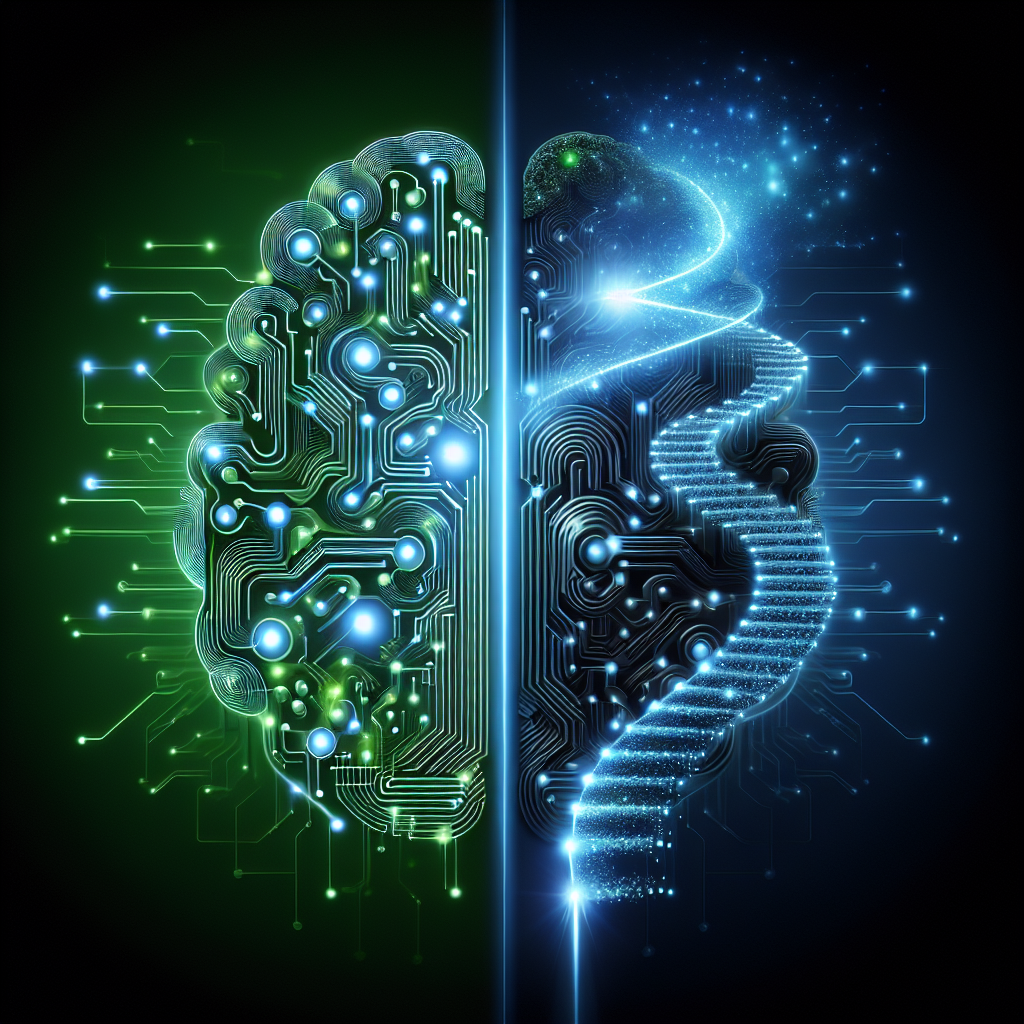Artificial Intelligence (AI) and Machine Learning (ML) are two terms that are often used interchangeably, but they are actually two distinct concepts. Understanding the differences between AI and ML is important for grasping the capabilities and limitations of each technology. In this article, we will explore the distinctions between AI and ML, and provide some frequently asked questions (FAQs) to help clarify these concepts.
What is Artificial Intelligence (AI)?
Artificial Intelligence (AI) is a broad field of computer science that focuses on creating machines or systems that can perform tasks that typically require human intelligence. These tasks can include reasoning, problem-solving, perception, understanding natural language, and learning from experience. AI systems can be designed to mimic human cognitive functions, such as decision-making, problem-solving, and pattern recognition.
There are two main types of AI: narrow AI and general AI. Narrow AI, also known as weak AI, is designed to perform specific tasks, such as facial recognition or language translation. General AI, also known as strong AI, is the concept of creating a machine that has the ability to perform any intellectual task that a human can do. General AI is still a theoretical concept and has not been achieved yet.
What is Machine Learning (ML)?
Machine Learning (ML) is a subset of AI that focuses on developing algorithms and models that enable computers to learn from data and make predictions or decisions without being explicitly programmed. ML algorithms use statistical techniques to identify patterns in data and make predictions or decisions based on those patterns. ML algorithms can be categorized into three main types: supervised learning, unsupervised learning, and reinforcement learning.
In supervised learning, the algorithm is trained on a labeled dataset, where the input data is paired with the correct output. The algorithm learns to map inputs to outputs by minimizing the error between the predicted output and the actual output. In unsupervised learning, the algorithm is trained on an unlabeled dataset, where the goal is to discover patterns or structures in the data. In reinforcement learning, the algorithm is trained to make a sequence of decisions in an environment to maximize a reward signal.
What are the Differences between AI and ML?
The main difference between AI and ML is that AI is a broader concept that encompasses various techniques and methodologies for creating intelligent systems, while ML is a specific subset of AI that focuses on developing algorithms to learn from data and make predictions or decisions. In other words, AI is the overarching field of creating intelligent systems, while ML is a specific approach to achieving AI.
AI can include a wide range of techniques, such as rule-based systems, expert systems, natural language processing, computer vision, and robotics. ML, on the other hand, focuses on developing algorithms that can learn from data and make predictions or decisions without being explicitly programmed. ML algorithms can be used in various AI applications, such as image recognition, speech recognition, recommendation systems, and predictive analytics.
Another key difference between AI and ML is the level of human intervention required. In traditional AI systems, the rules and logic for performing tasks are explicitly programmed by humans. In ML systems, the algorithms learn to perform tasks by analyzing data and identifying patterns without explicit programming. This allows ML systems to adapt and improve over time as they are exposed to more data.
FAQs about AI vs ML:
Q: Are AI and ML the same thing?
A: No, AI is a broader field that encompasses various techniques for creating intelligent systems, while ML is a specific subset of AI that focuses on developing algorithms to learn from data and make predictions or decisions.
Q: Can AI systems learn from data without ML?
A: Yes, AI systems can be designed using rule-based systems or expert systems that do not require ML techniques. However, ML is a powerful approach for creating AI systems that can learn from data and improve over time.
Q: What are some examples of AI applications that do not use ML?
A: Some examples of AI applications that do not use ML include rule-based systems for decision-making, expert systems for diagnosing medical conditions, and natural language processing systems for language translation.
Q: Can ML algorithms be used in non-AI applications?
A: Yes, ML algorithms can be used in various applications outside of AI, such as predictive analytics, fraud detection, and optimization problems. ML techniques are widely used in data science and statistics for analyzing and interpreting data.
Q: Is it possible to achieve general AI without ML?
A: General AI, which is the concept of creating a machine that has the ability to perform any intellectual task that a human can do, has not been achieved yet. ML is a powerful approach for creating intelligent systems that can learn from data and improve over time, but achieving general AI will likely require a combination of various AI techniques.
In conclusion, understanding the distinctions between AI and ML is crucial for grasping the capabilities and limitations of each technology. AI is a broad field of computer science that focuses on creating intelligent systems, while ML is a specific subset of AI that focuses on developing algorithms to learn from data and make predictions or decisions. By understanding the differences between AI and ML, we can better appreciate the potential of these technologies and their applications in various domains.

